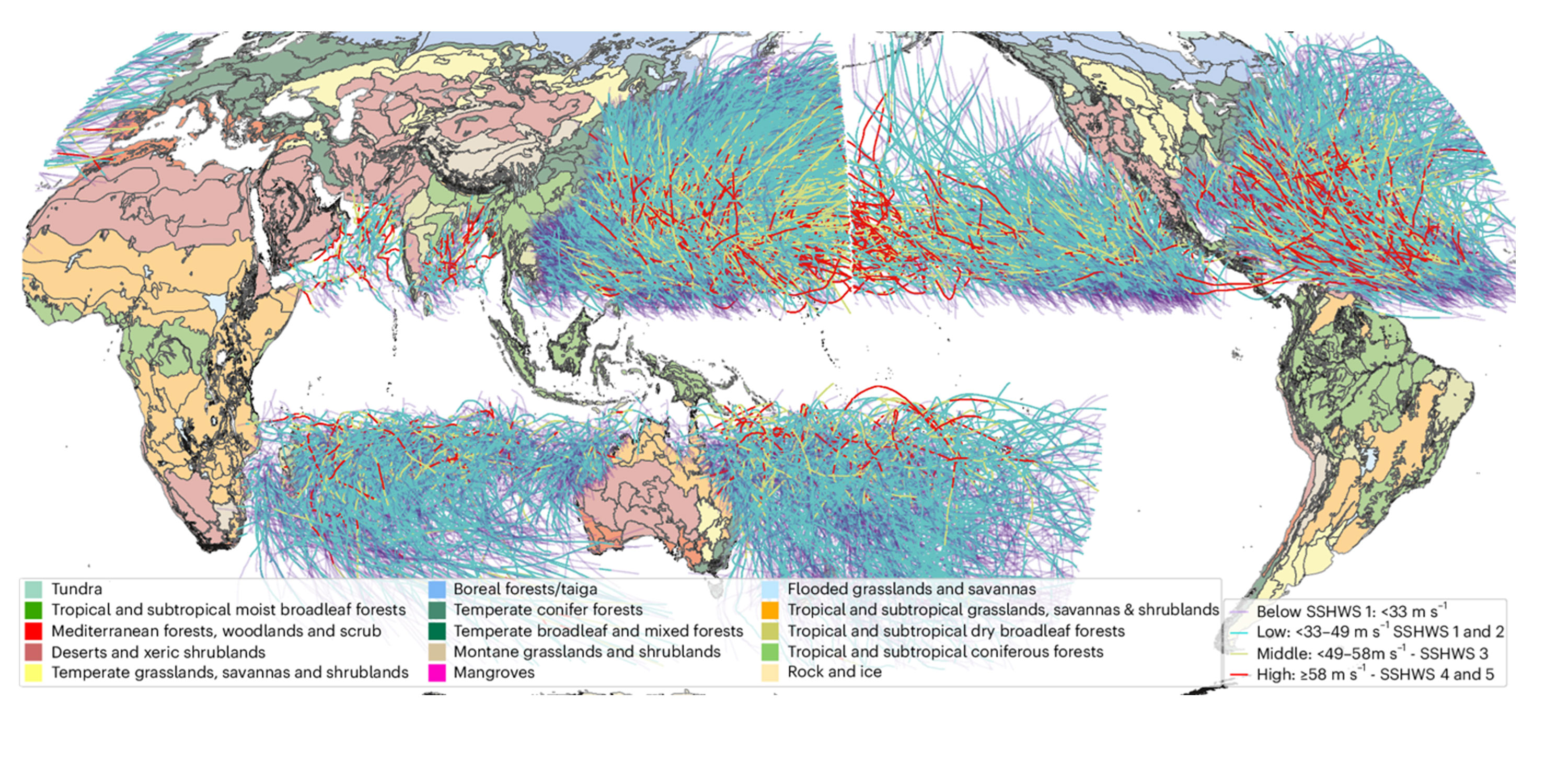Not without effect: Tropical storms will challenge ecosystems
Up to that 9.4% of Earth's terrestrial ecosystems face potential transformation by 2050 due to changes in tropical cyclone activity. In their study, Chahan M. Kropf and colleagues from ETH Zurich show the significant impact of changing tropical cyclone patterns on global ecosystems.

The study categorizes ecosystems into resilient, dependent, and vulnerable based on their historical exposure to cyclones and recovery dynamics. Vulnerable ecosystems, covering 16.5 million km² globally, face the greatest risk. On average, at-risk ecosystems face up to a 149% increase in high-intensity storms under shared socio-economic pathway 585 by 20250, challenging most ecosystems’ ability to recover. Even currently resilient ecosystems are at risk with the average recover time between high-intensity storms changing from 19 years to 12 years in the future. Furthermore, dependent ecosystems are affected not only by increasing frequencies but also decreasing frequencies of low intensity storms in the Caribbeans.
Importantly, the research emphasizes the need to consider disturbance regimes—patterns of events like cyclones—in understanding ecosystem dynamics under climate change. Disturbances such as tropical cyclones, while often viewed as destructive, play critical roles in maintaining certain ecosystems' functionality.
The findings call for integrating these perspectives into conservation strategies and climate adaptation policies. By focusing on both immediate impacts and the long-term recovery dynamics of ecosystems, this research provides a foundation for more resilient management approaches in the face of a changing climate.
Reference
Kropf CM, Vaterlaus L, Bresch DN et al. Tropical cyclone risk for global ecosystems in a changing climate. Nat. Clim. Chang. 15, 92–100 (2025). DOI: external page 10.1038/s41558-024-02194-w
This work acknowledges the EU-project external page SPARCCLE and external page PROVIDE.
